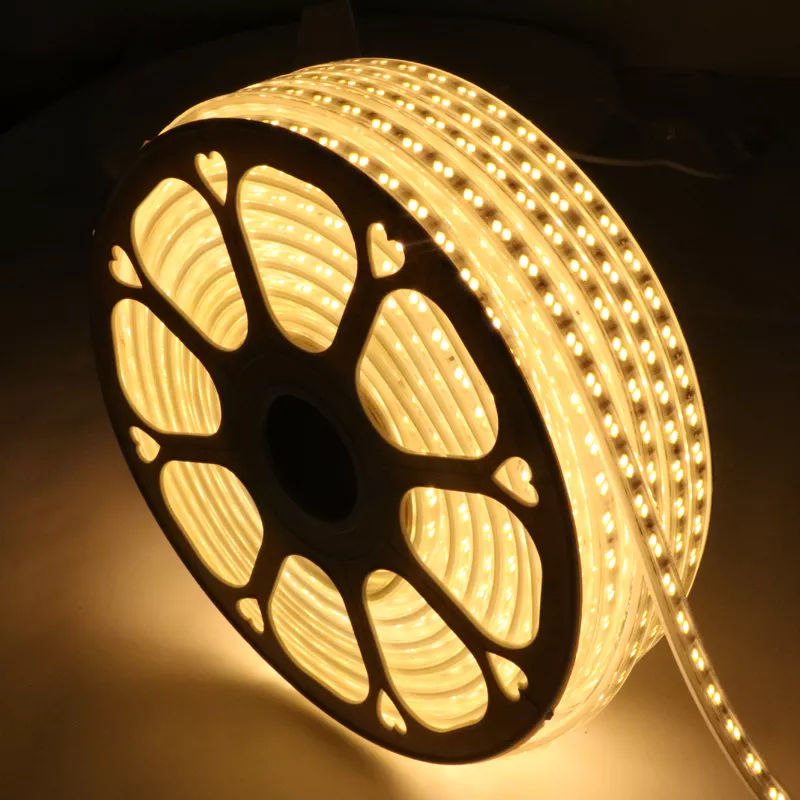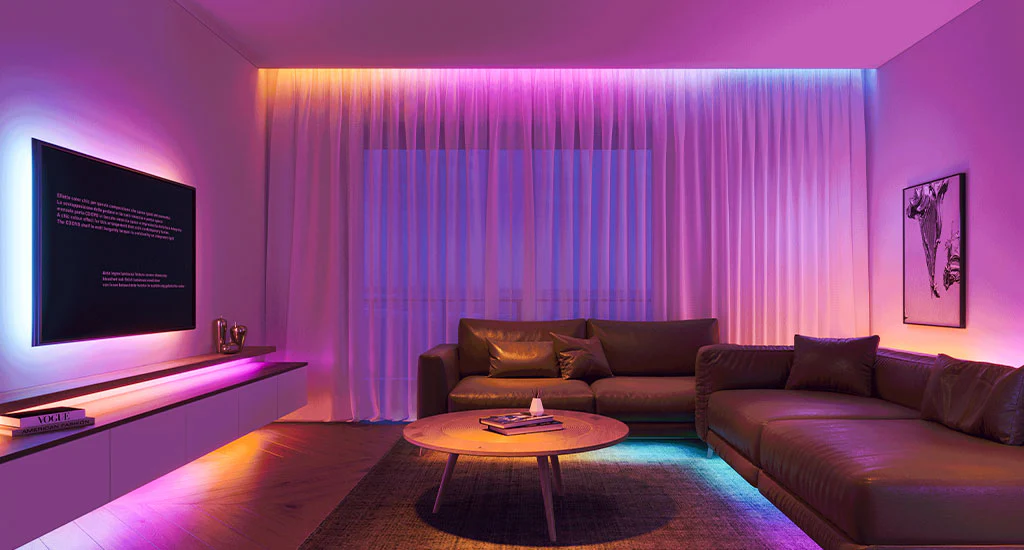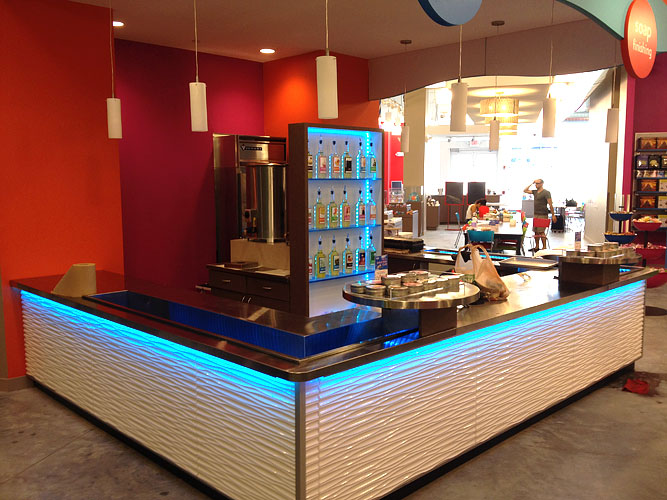A Comprehensive Guide to LED Strip Lights

Introduction
LED strip lights are a versatile and efficient lighting solution that has gained widespread popularity for various applications. These lights consist of small LED chips mounted on a flexible circuit board, which can be easily installed in a variety of settings. The flexibility of the circuit board allows the strip lights to be bent or shaped to fit different surfaces, making them an ideal choice for both residential and commercial spaces. These chips are typically arranged in a series along the circuit board, which is made from a flexible material that can be cut to the desired length. The adhesive backing allows for easy installation on almost any surface, providing a hassle-free setup.
Benefits and Versatility of LED Strip Lights
LED strip lights have emerged as a popular choice for modern lighting due to their numerous advantages.
- One of the primary benefits is their energy efficiency. Compared to traditional lighting solutions, LED strip lights consume significantly less power, which translates to lower electricity bills and a reduced carbon footprint. This cost-effectiveness makes them an attractive option for both residential and commercial settings.
- In addition to being energy-efficient, LED strip lights are also environmentally friendly. They have a longer lifespan than conventional bulbs, which means fewer replacements and less waste. Furthermore, LED lights do not contain harmful substances like mercury, making them a safer and more sustainable option.
- The versatility of LED strip lights is another key factor contributing to their popularity. Available in a wide range of colors, lengths, and functionalities, they can be customized to suit various needs. For instance, color-changing strip lights allow users to create dynamic lighting effects, perfect for setting the mood in any room. Waterproof options make them ideal for outdoor use, such as illuminating garden paths or pool areas.
- LED strip lights also come with features like dimmable settings and self-adhesive backs, providing users with greater control and ease of installation. Smart capabilities, such as integration with home automation systems, further enhance their functionality, allowing users to control the lights remotely via smartphone apps or voice commands.
- The use cases for LED strip lights are virtually limitless. In the kitchen, they can be installed under cabinets to provide task lighting, while in the bedroom, they can create a relaxing ambiance. In the living room, LED strip lights can be used to highlight architectural features or create a cozy atmosphere. Outdoor spaces benefit from their durability and waterproof properties, making them perfect for accentuating landscaping or providing pathway illumination.
Applications of LED Strip Lights in Home and Business
LED strip lights have revolutionized the way we illuminate our spaces, offering versatility and efficiency like never before. These lighting solutions are not just limited to aesthetic enhancements; they serve practical purposes in various settings, ranging from homes to businesses. Their adaptability allows for a range of applications, including under-cabinet lighting, task lighting, mood lighting, accent lighting, and cove lighting.
1. Homes

In the home, LED strip lights are commonly used as under-cabinet lighting in kitchens, providing bright and focused illumination for meal preparation and cooking. This not only enhances visibility but also adds a modern touch to kitchen decor. Similarly, in bathrooms, LED strip lights can be installed around mirrors to provide even lighting, aiding in daily grooming tasks.
Living rooms benefit from the versatility of color-changing strip lights, which can be adjusted to create different moods. Whether it’s a soft, warm glow for a cozy evening or a vibrant, colorful display for a festive gathering, LED strip lights offer endless possibilities. Accent lighting is another application where these lights shine, highlighting architectural features, artwork, or shelving units, adding depth and dimension to any room.
2. Business

In business settings, LED strip lights are equally valuable. Offices can use task lighting to improve workspace illumination, reducing eye strain and boosting productivity. Retail spaces often utilize LED strip lights for cove lighting, creating an inviting atmosphere that enhances the shopping experience. The flexibility of LED strip lights allows for creative displays and dynamic lighting arrangements that can attract customers and highlight products effectively.
Real-world examples of LED strip lights in action can be seen in upscale restaurants, where they provide ambient lighting that enhances the dining experience, or in tech-savvy offices, where they contribute to a modern, innovative atmosphere. By integrating Skywave LED strip lights, businesses can achieve both functional and aesthetic goals, making these lighting solutions a smart choice for any environment.
DIY Project: Installing Under Cabinet LED Strip Lights with a Dimmer Switch
Installing under-cabinet LED strip lights with a dimmer switch can significantly enhance the functionality and ambiance of your kitchen or workspace. This DIY project is straightforward and can be completed with basic tools and materials. Below, we provide a comprehensive step-by-step guide to help you achieve professional results.
Materials Needed:
- LED strip lights (preferably color-changing strip lights for versatility)
- Dimmer switch compatible with LED strip lights
- Power supply/adapter
- Double-sided adhesive tape or mounting clips
- Wire connectors and electrical tape
- Wire cutter/stripper
- Measuring tape and pencil
- Drill (if mounting clips are used)
Step-by-Step Instructions
1. Measure and Plan
Start by measuring the length of the cabinets where you will install the LED strip lights. Mark the areas where the lights will go, ensuring they are evenly spaced. Planning the layout beforehand helps in achieving a clean and professional look.
2. Prepare the Surface
Before adhering the LED strip lights, clean the underside of the cabinets thoroughly to remove any grease or dust. This ensures better adhesion of the strips.
3. Cut the LED Strips
Most LED strips can be cut at designated points. Measure the required length and carefully cut the strips using scissors. Ensure you cut only at the marked points to avoid damaging the circuitry.
4. Attach the Strips
Peel off the adhesive backing from the LED strips and carefully stick them to the underside of the cabinets. If using mounting clips, drill small pilot holes and secure the clips before attaching the strips. Make sure the LED lights are facing downwards for optimal illumination.
5. Connect the Power Supply
Connect the LED strips to the power supply using the provided connectors. Ensure all connections are secure and insulated with electrical tape to prevent short circuits. Plug the power adapter into a nearby outlet.
6. Install the Dimmer Switch
Follow the manufacturer’s instructions to install the dimmer switch. Typically, this involves connecting the dimmer between the power supply and the LED strips. Secure the dimmer switch in a convenient location where it can be easily accessed.
7. Test the Lights
Once everything is connected, turn on the power and test the LED strip lights. Adjust the brightness using the dimmer switch to ensure it functions correctly. Make any necessary adjustments to the placement or connections.
Safety Precautions
When working with electrical components, always ensure the power is turned off before making any connections. Use insulated tools and follow the manufacturer’s guidelines for all components. If you are unsure about any step, consult a professional electrician.
By installing under cabinet LED strip lights with a dimmer switch, you can enjoy improved task lighting and the ability to customize brightness levels, making your kitchen or workspace more efficient and aesthetically pleasing. This DIY project not only enhances the look of your space but also adds practical functionality.
Creative Uses and Considerations for Choosing LED Strip Lights
LED strip lights have revolutionized the way we approach home and commercial lighting, offering a level of flexibility and creativity that was previously unattainable.
- One popular application of LED strip lights is backlighting for televisions, which not only enhances the viewing experience by reducing eye strain but also adds an elegant glow to your entertainment area. For movie enthusiasts, color-changing strip lights can be used to create a dynamic home theater ambiance, setting the perfect mood for any film genre.
- Another innovative use of LED strip lights is outlining architectural features within a space. By highlighting elements such as crown molding, staircases, or shelving, you can add depth and dimension to your interiors. Whether you are aiming for a modern look or a more traditional aesthetic, LED strip lights can be customized to suit various design preferences.
When selecting the right LED strip lights, several factors should be considered to ensure optimal performance and satisfaction.
- Brightness, measured in lumens, is crucial depending on the intended use. For task lighting, higher lumens are recommended, while ambient lighting can suffice with lower lumens.
- Color temperature also plays a significant role; cooler temperatures (5000K-6500K) are ideal for workspaces, whereas warmer tones (2700K-3000K) create a cozy, inviting atmosphere.
- The power source is another essential consideration. While some LED strip lights plug directly into wall outlets, others are battery-operated or USB-powered, offering versatility for different setups.
- Additionally, the installation method should not be overlooked. Adhesive-backed strips are convenient for most applications, but some projects may require mounting clips or channels for a more secure fit.
Skywave stands out as a trusted dealer of high-quality LED strip lights. They offer a diverse range of products, including color changing strip lights and various lengths and brightness levels to meet any project requirement. With Skywave, you can be assured of reliable performance and long-lasting illumination, making it easier than ever to enhance your space with the perfect lighting solution.
Conclusion
In conclusion, LED strip lights offer a versatile and energy-efficient solution to elevate the ambiance of any space. Their adaptability to various applications—from accent and task lighting to decorative and architectural enhancements—makes them an invaluable addition to both residential and commercial settings. The availability of color-changing strip lights further adds to their appeal, allowing users to create dynamic and personalized lighting effects.
When selecting LED strip lights, it is crucial to consider factors to ensure the best fit for your specific needs. Opting for high-quality products like those offered by Skywave guarantees durability and optimal performance, making your investment worthwhile.
We encourage you to explore the myriad of possibilities that LED strip lights provide. Whether you’re embarking on a DIY project or looking to professionally upgrade your space, the potential for creativity is boundless. Feel free to share your own LED strip light projects or experiences with us. Your insights and innovations could inspire others to transform their environments with these versatile lighting solutions.



